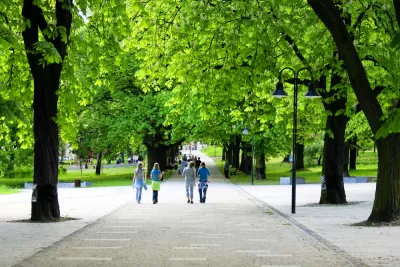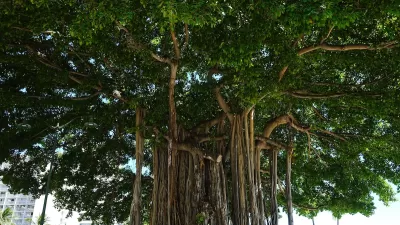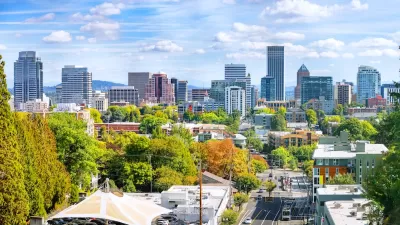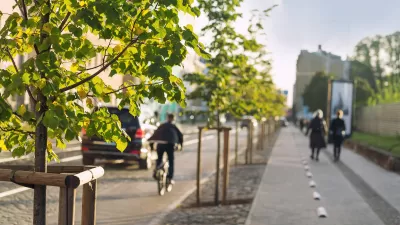Sarah Laskow reports on recent research on the surprisingly two-way connection between the happiness of urban trees and the happiness of urban humans.

Sarah Laskow begins an article for Next City by describing the work of Mark Taylor, a public health researcher at the University of Trnava in Slovakia. Taylor and his colleagues "collected data on two variables: the density of street trees and the number of antidepressant prescriptions in London’s 33 boroughs." The methodology made it possible to draw a "connection between nature and mental health without relying on people’s own accounts of their well-being."
The study, published in the Landscape and Urban Planning Journal, found that "even after adjusting for factors like unemployment and affluence, the areas that have the most trees along the streets also had fewer prescriptions for antidepressants."
Laskow also describes the research of Jess Vogt, a visiting assistant professor at Furman University, in South Carolina, whose research examines the following question: "How can people help street trees thrive — and vice versa?" Vogt examined 35 projects, in 25 Indianapolis neighborhoods. "They documented whether 1,345 trees had lived or died and looked more closely at 616 trees, to see how they’d grown." Vogt's findings suggest that the trees' quality of life "wasn’t just influenced by its immediate surroundings, but by the people they interacted with."
FULL STORY: How Trees Can Make City People Happier (and Vice Versa)

Alabama: Trump Terminates Settlements for Black Communities Harmed By Raw Sewage
Trump deemed the landmark civil rights agreement “illegal DEI and environmental justice policy.”

Planetizen Federal Action Tracker
A weekly monitor of how Trump’s orders and actions are impacting planners and planning in America.

The 120 Year Old Tiny Home Villages That Sheltered San Francisco’s Earthquake Refugees
More than a century ago, San Francisco mobilized to house thousands of residents displaced by the 1906 earthquake. Could their strategy offer a model for the present?

In Both Crashes and Crime, Public Transportation is Far Safer than Driving
Contrary to popular assumptions, public transportation has far lower crash and crime rates than automobile travel. For safer communities, improve and encourage transit travel.

Report: Zoning Reforms Should Complement Nashville’s Ambitious Transit Plan
Without reform, restrictive zoning codes will limit the impact of the city’s planned transit expansion and could exclude some of the residents who depend on transit the most.

Judge Orders Release of Frozen IRA, IIJA Funding
The decision is a victory for environmental groups who charged that freezing funds for critical infrastructure and disaster response programs caused “real and irreparable harm” to communities.
Urban Design for Planners 1: Software Tools
This six-course series explores essential urban design concepts using open source software and equips planners with the tools they need to participate fully in the urban design process.
Planning for Universal Design
Learn the tools for implementing Universal Design in planning regulations.
Clanton & Associates, Inc.
Jessamine County Fiscal Court
Institute for Housing and Urban Development Studies (IHS)
City of Grandview
Harvard GSD Executive Education
Toledo-Lucas County Plan Commissions
Salt Lake City
NYU Wagner Graduate School of Public Service





























